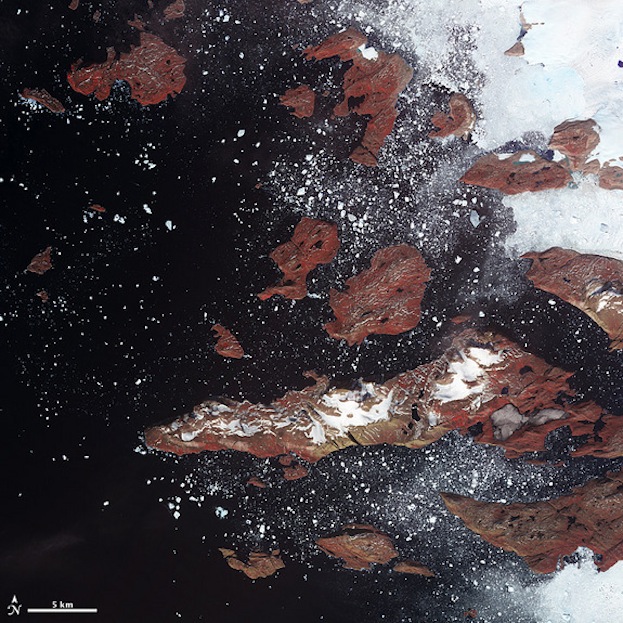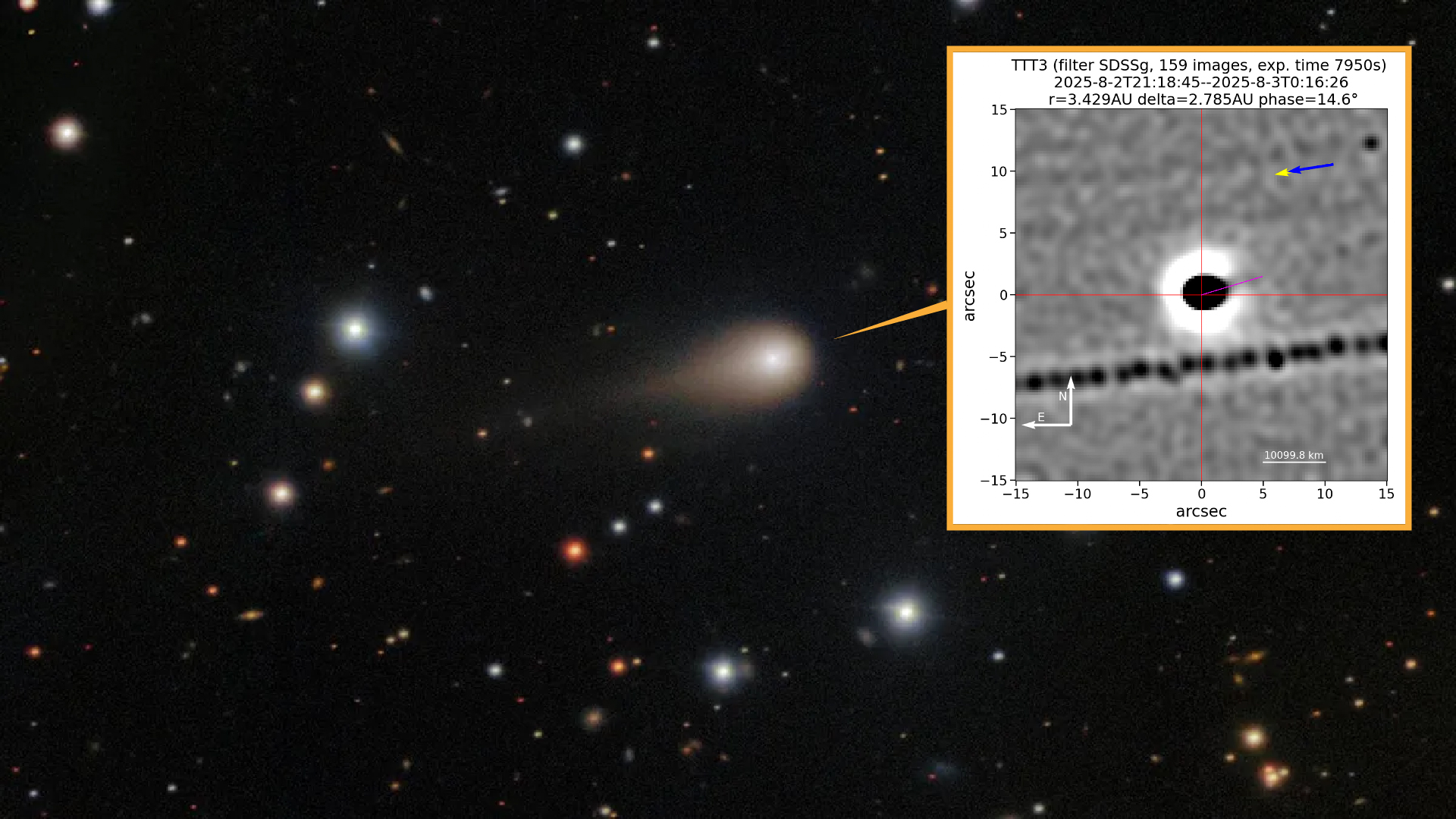
Greenland's Small, but Menacing Icebergs

The specks of white visible in this NASA satellite photo are icebergs that have broken off from the glaciers that flow from the massive Greenland Ice Sheet out to the sea.
The ice sheet spans some 650,000 square miles (1.7 million square kilometers) and holds enough ice that if it were to melt entirely, it would raise global sea levels by 23 feet (7 meters).
Dozens of tidewater glaciers are fed by the ice sheet and run out to sea, like rivers of ice. Where the glaciers meet the water, chunks of ice typically break off, or calve, from the glaciers and form icebergs.
The scattering of icebergs seen here were caught floating in Baffin Bay on July 17, 2005, by the Advanced Spaceborne Thermal Emission and Reflection Radiometer (ASTER) on NASA's Terra satellite.
ASTER combines infrared, red and green wavelengths of light to make false-color images. In this image, water is navy blue, snow and ice are mostly white, and surface melting and waterlogging color some of the icy surfaces pale blue. Bare ground ranges in color from brown to red, and red indicates vegetation.
The icebergs in Baffin Bay may have broken off from two nearby glaciers — Nunatakavsaup Sermia to the north and Igdlugdlip Sermia (or Illulip Sermia) to the south — although some icebergs might have drifted to this region from farther away, according to a NASA release.
Just off the tongues of the tidewater glaciers, big blocks of ice and masses of snow, called a mélange, can be found. The icebergs located further out are pushed around by the winds and ocean currents.
Get the world’s most fascinating discoveries delivered straight to your inbox.
The icebergs calved by Greenland glaciers are typically smaller than the massive, city-sized ones that break off of the Antarctic Ice Sheet. But the icebergs shed by Greenland actually pose a greater hazard to ships because they are harder to detect. It was an iceberg from Greenland, carried by the Labrador Current, that collided with the Titanic and sank the supposedly unsinkable ship.
